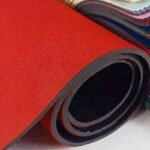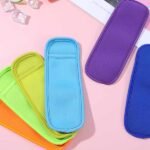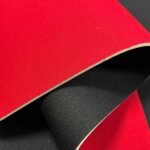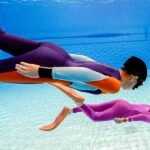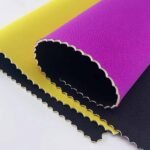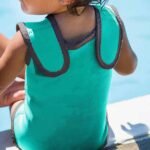Whether you’re a surf brand, dive gear supplier, or a private label startup looking to break into the activewear market, understanding wetsuits is crucial. They’re not all created equal—wetsuit types, thicknesses, materials, and construction methods vary widely depending on purpose and water conditions. But how do you differentiate between them and choose the right one for your customers?
Wetsuits come in various styles, materials, and constructions tailored for specific water sports and temperatures. Choosing the right wetsuit depends on its type, thickness, fit, and seam construction—all of which impact comfort, flexibility, and insulation.
In this guide, we’ll break down everything brands, wholesalers, and OEM/ODM buyers need to know about wetsuit types—from full suits and spring suits to zipper systems and neoprene grades. We’ll also dive into customization options and how to choose a manufacturer that truly understands performance gear. Let’s get started by demystifying what wetsuits actually are—and why getting the right one matters more than ever.
What Is a Wetsuit?

A wetsuit is a body-hugging garment made primarily from neoprene, designed to trap a thin layer of water between the suit and your skin, which then warms to your body temperature and insulates you from cold water.
Wetsuits help retain body heat by insulating the body with neoprene material, making them essential for water activities in cold conditions.
- Wetsuits are not waterproof, unlike drysuits.
- Thickness and fit are crucial to performance.
- Styles include full suits, spring suits, and wetsuit tops.
What Are the Differences in Wetsuits?
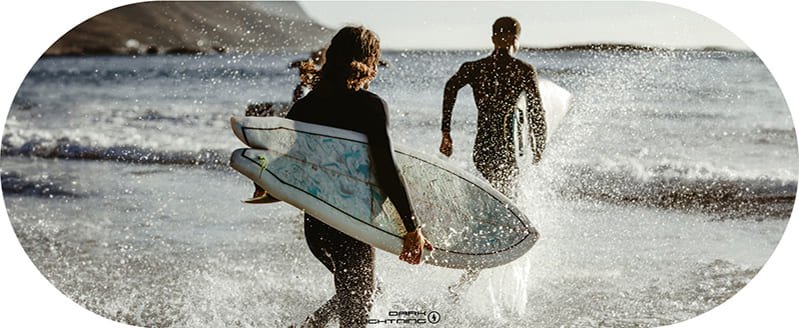
Wetsuits differ by type, thickness, zipper placement, seam construction, and the sports they are designed for.
What Are the Differences in Wetsuits by Style and Construction?
| Type | Description | Best Use |
|---|---|---|
| Full Suit | Covers entire body, incl. limbs | Cold-water diving |
| Spring Suit | Short arms and/or legs | Warm-water surfing |
| Long John | Sleeveless with long legs | SUP, paddling |
| Wetsuit Top | Torso only | Layering, tropics |
Is a 3/2 or 4/3 Wetsuit Better for Specific Conditions?
A 3/2mm wetsuit is ideal for 60–68°F, while a 4/3mm works better for 52–60°F. Thicker suits are warmer but less flexible.
Understanding Seam Construction: Flatlock vs. GBS vs. Taped Seams
| Seam Type | Description | Waterproof | Flexibility |
|---|---|---|---|
| Flatlock | Stitched through both layers | ❌ | ✅ |
| GBS | Glued & blind stitched | ✅ | Moderate |
| Taped Seams | GBS with seam tape added | ✅✅ | Slightly stiff |
Which Wetsuit Type Is Best for Different Water Sports?
Different sports require different wetsuit types based on flexibility, warmth, and water exposure levels.
Best Wetsuits for Surfing, Diving, and Triathlon
| Sport | Recommended Suit | Features |
|---|---|---|
| Surfing | 3/2mm full or spring suit | Flexibility, quick dry |
| Diving | 5/4/3mm full suit | Insulation, sealed seams |
| Triathlon | Sleeveless suit | Buoyancy, streamlined design |
How Water Temperature and Activity Level Impact Suit Selection
- High-intensity = more flexibility (thinner neoprene)
- Cold water = thicker suits with sealed seams
Is It Better to Have a Tight or Loose Wetsuit?
Tight suits trap heat better. A wetsuit should feel snug but allow full movement and breathing.
How Do Neoprene Thickness and Material Affect Wetsuit Performance?
Neoprene thickness and density determine a wetsuit’s warmth, buoyancy, and flexibility.
The Role of Neoprene Thickness (2mm vs. 3/2mm vs. 4/3mm)
- 2mm: Warm water
- 3/2mm: Mid-range comfort
- 4/3mm: Cold water
Which Material Provides Better Performance: Standard vs. Premium Neoprene?
| Neoprene Type | Flexibility | Durability | Warmth |
|---|---|---|---|
| Standard Neoprene | ⭐⭐⭐ | ⭐⭐⭐⭐ | ⭐⭐⭐ |
| Limestone Neoprene | ⭐⭐⭐⭐ | ⭐⭐⭐⭐ | ⭐⭐⭐⭐ |
| Yulex (Eco) | ⭐⭐⭐⭐ | ⭐⭐⭐ | ⭐⭐ |
What Is the Difference Between Cheap and Expensive Wetsuits?
Expensive wetsuits offer:
- Higher quality neoprene
- Taped seams
- Better thermal lining
- Longer lifespan
Are There Wetsuits for Kids, Women, and Plus Sizes?
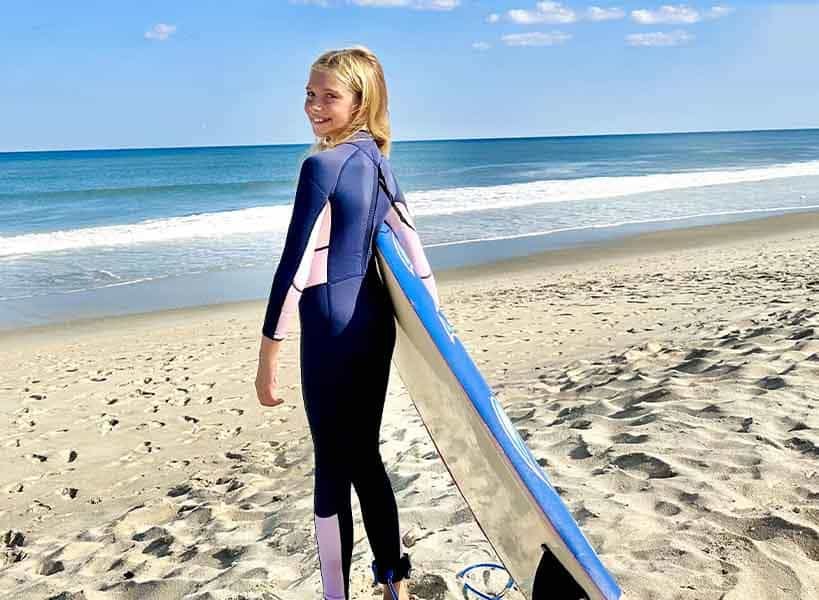
Yes, wetsuits are available in gender-specific and inclusive sizing to meet diverse body needs.
Key Fit Differences Between Men’s, Women’s, and Youth Wetsuits
- Men: Broader shoulders, longer legs
- Women: Curvier shape, shorter torso
- Kids: Growth-friendly, soft seals
How to Develop Inclusive Size Ranges for Your Brand
Develop size charts from 2XS to 5XL. Use customer feedback and fit testing.
Why Fit and Body Mapping Matter for Buyers
Good fit = customer satisfaction. Use 3D patterning and sampling before launch.
What Customization Options Are Available for OEM/ODM Wetsuits?
Customization helps brands stand out and serve unique market niches.
Neoprene Color, Thickness, and Material Customization
- Multiple colors & thicknesses
- Eco-neoprene or limestone options
- Mixed thickness panels for performance
Logo Printing, Panel Stitching, and Branded Zippers
- Screen printing or embossing
- Unique panel placement
- Custom zippers and tags
Packaging Options for E-commerce and Retail Channels
- Branded polybags or gift boxes
- QR codes, hangtags, inserts
- Eco packaging options
How to Choose the Right Wetsuit Manufacturer for Your Business?

Reliable suppliers offer low MOQs, sampling, and quality control for consistent results.
Key Factors: MOQ, Sampling, Lead Time, and Quality Control
| Criteria | Szoneier | Industry Avg |
|---|---|---|
| MOQ | 100 pcs/style | 300–500 pcs |
| Sample Time | 5–7 days | 10–15 days |
| Bulk Lead Time | 25–30 days | 45–60 days |
| QC Standard | 100% inspected | Random checks |
How to Evaluate a Supplier’s R&D and Customization Capability
- In-house design team
- Rapid prototyping
- Verified certifications (ISO, REACH, BSCI)
Where to Buy Bulk or Private Label Wetsuits for Resale or Branding?
Sourcing directly from manufacturers ensures consistency, flexibility, and full control over your product line.
Best Platforms and Fairs to Find OEM/ODM Suppliers
- Global Sources
- ISPO, Canton Fair
- Factory websites like Szoneier
Why Szoneier Is a Trusted Source for Custom Wetsuits
- 18+ years of experience
- Quick sampling, flexible MOQ
- Free design and full development support
Certifications and Compliance for Global Markets
- REACH, RoHS, Prop 65
- ISO 9001, BSCI
- CE marking if needed
Ready to Customize Wetsuits with Szoneier?
Whether you’re building a new surf label, growing a dive gear business, or expanding into activewear, Szoneier is ready to help. We specialize in OEM/ODM wetsuits with:
- Low MOQ
- Fast prototyping
- 100% quality inspection
- Full customization
Contact us today to start your custom wetsuit project and get a free quote or sample. Let’s bring your wetsuit brand to life—together.



